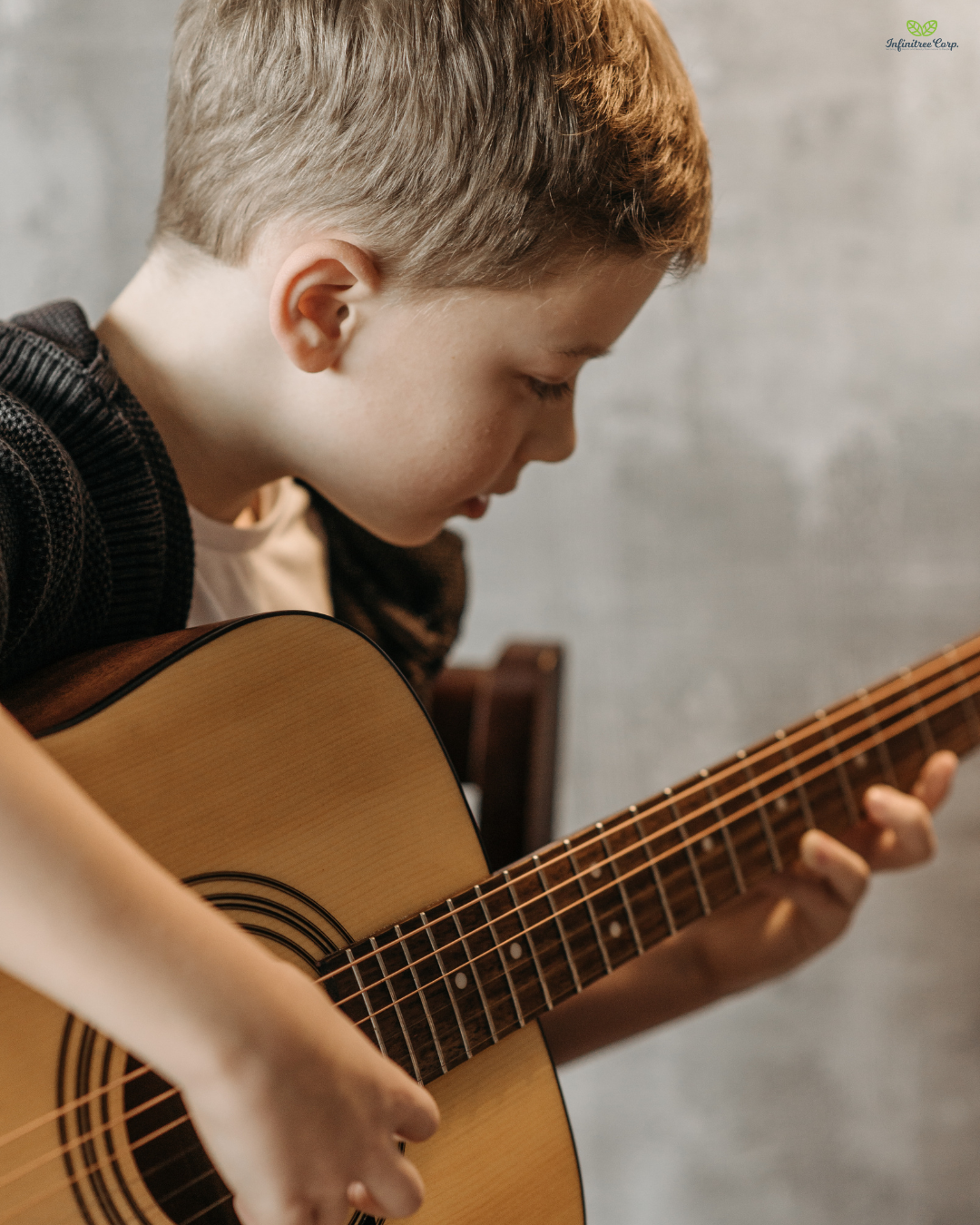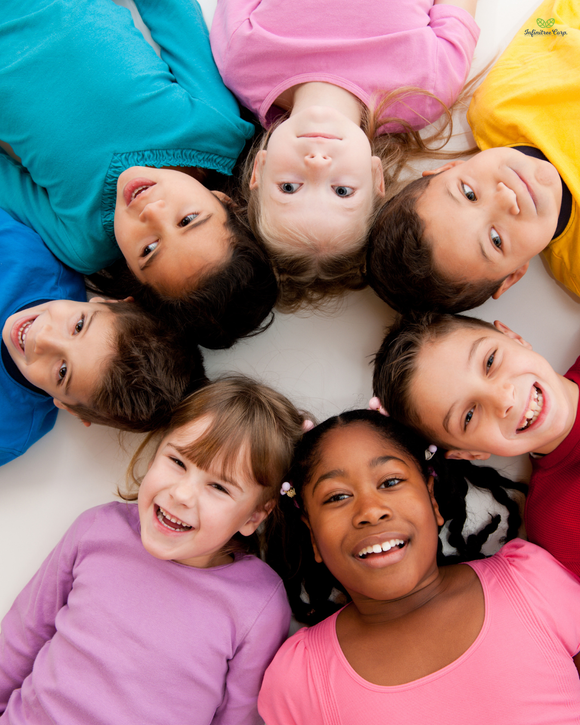
How Music Education Enhances Brain Development and Physical Coordination
InfinitreeEditor.Jo
How Music Education Enhances Brain Development and Physical Coordination
A Simple Tune, A Big Transformation
When my daughter first picked up the violin, she struggled to hold the bow properly and coordinate her fingers. But after weeks of practice, something amazing happened—her movements became more fluid, her focus improved, and she started excelling in school subjects that required critical thinking.
It turns out that learning music isn’t just about playing an instrument—it’s a full-brain workout that enhances cognitive function, memory, and even physical coordination.
Limited Stimulation for Developing Minds and Bodies
Many kids today miss out on activities that challenge both their brain and body. Some common issues include:
- Reduced Attention Span: Kids are exposed to fast-paced digital content that affects focus.
- Lack of Fine Motor Development: Less hands-on activity leads to weaker hand-eye coordination.
- Limited Multi-Tasking Skills: Many school activities focus on memorization rather than real-time problem-solving.
Music education is a powerful tool that helps children overcome these challenges while building essential skills for lifelong growth.
How Music Supports Brain and Physical Development
-
Boosts Cognitive Function
- Learning notes, rhythms, and melodies strengthens memory, problem-solving, and concentration.
-
Enhances Motor Skills and Coordination
- Playing an instrument requires precise finger movements, improving dexterity and hand-eye coordination.
-
Improves Language Processing
- Music and language share neural pathways, making music learners better at reading and comprehension.
-
Develops Emotional Intelligence
- Playing and interpreting music helps kids express emotions and build confidence.
-
Strengthens Multi-Tasking Abilities
- Musicians process multiple elements at once (notes, rhythm, posture), improving overall brain function.
The Solution: Incorporating Music Education into a Child’s Routine
Music doesn’t have to be a formal lesson—it can be a fun, interactive part of daily life. Here’s how to introduce music education to support both cognitive and physical growth.
1. Introduce Music Through Movement
Why It Helps:
Dancing and moving to music improve motor coordination and rhythm.
How to Do It:
- Play different styles of music and encourage your child to move with the beat.
- Try simple hand-clapping games to develop timing and coordination.
Example:
Play "freeze dance" where your child stops moving when the music pauses, improving reaction time.
Pro Tip:
Use scarves or ribbons to create flowing movements that enhance spatial awareness.
2. Start with Easy Instruments
Why It Helps:
Basic instruments develop finger dexterity and fine motor control.
How to Do It:
- Give toddlers maracas or tambourines to shake to the rhythm.
- Let older kids try simple keyboards or ukuleles to explore melodies.
Example:
Have your child tap along with their favorite song using a small drum or even kitchen utensils.
Pro Tip:
Encourage experimentation—let kids create their own beats or tunes!
3. Use Music to Improve Memory
Why It Helps:
Singing lyrics strengthens verbal memory and language skills.
How to Do It:
- Learn songs with repetitive patterns to boost memory.
- Use rhymes and tunes to help with spelling and math skills.
Example:
Sing the alphabet song or create a catchy tune for learning multiplication tables.
Pro Tip:
Make up silly songs together to reinforce learning in a fun way!
4. Encourage Instrument Practice for Coordination
Why It Helps:
Playing instruments requires precise hand movements, boosting fine motor skills.
How to Do It:
- Choose beginner-friendly instruments like the recorder or violin.
- Set small, achievable practice goals (e.g., five minutes a day).
Example:
Have your child practice finger exercises on a keyboard to improve agility.
Pro Tip:
Let kids explore different instruments before committing to one—they’ll find what excites them most.
5. Connect Music to Emotions and Creativity
Why It Helps:
Music helps kids express emotions and enhances imagination.
How to Do It:
- Encourage kids to play or compose songs that reflect their mood.
- Use music to tell stories—ask them to describe what a song “feels” like.
Example:
Play different songs and ask, “Does this music sound happy or sad?” to build emotional awareness.
Pro Tip:
Encourage free play—let kids make up their own tunes without rules!
Putting It All Together: A Weekly Music Plan
Monday: Dance and move to different musical styles.
Tuesday: Play a simple rhythm game using claps or percussion instruments.
Wednesday: Sing along to a song with repetitive lyrics.
Thursday: Practice finger exercises on a keyboard or another instrument.
Friday: Listen to music and discuss its emotions or story.
Saturday: Make music together using household objects.
Sunday: Reflect on what they enjoyed most and set a new goal for next week.
By making music a regular habit, kids develop focus, coordination, and creativity in a natural and enjoyable way.
Tips for Encouraging Music Learning
-
Keep It Fun and Stress-Free
- Focus on enjoyment rather than perfection.
-
Expose Kids to Different Styles
- Introduce classical, jazz, pop, and world music for a broad experience.
-
Let Them Lead
- Give kids freedom to explore sounds and instruments.
-
Celebrate Progress
- Acknowledge small achievements to boost confidence and motivation.
Conclusion: A Symphony of Growth
Music education is more than just a hobby—it’s a powerful tool for supporting brain development, motor coordination, and emotional intelligence. By integrating music into everyday activities, kids build essential skills that help them succeed academically, socially, and physically.
Pair music education with proper nutrition and a supplement like Opti-up Alpha Plus to support brain function and energy levels. Let’s help our kids create a lifelong love for music—one note at a time!
Disclaimer: This article is for informational purposes only and does not constitute medical advice. Please consult your healthcare provider before making significant dietary changes or introducing new supplements to your child’s routine.






